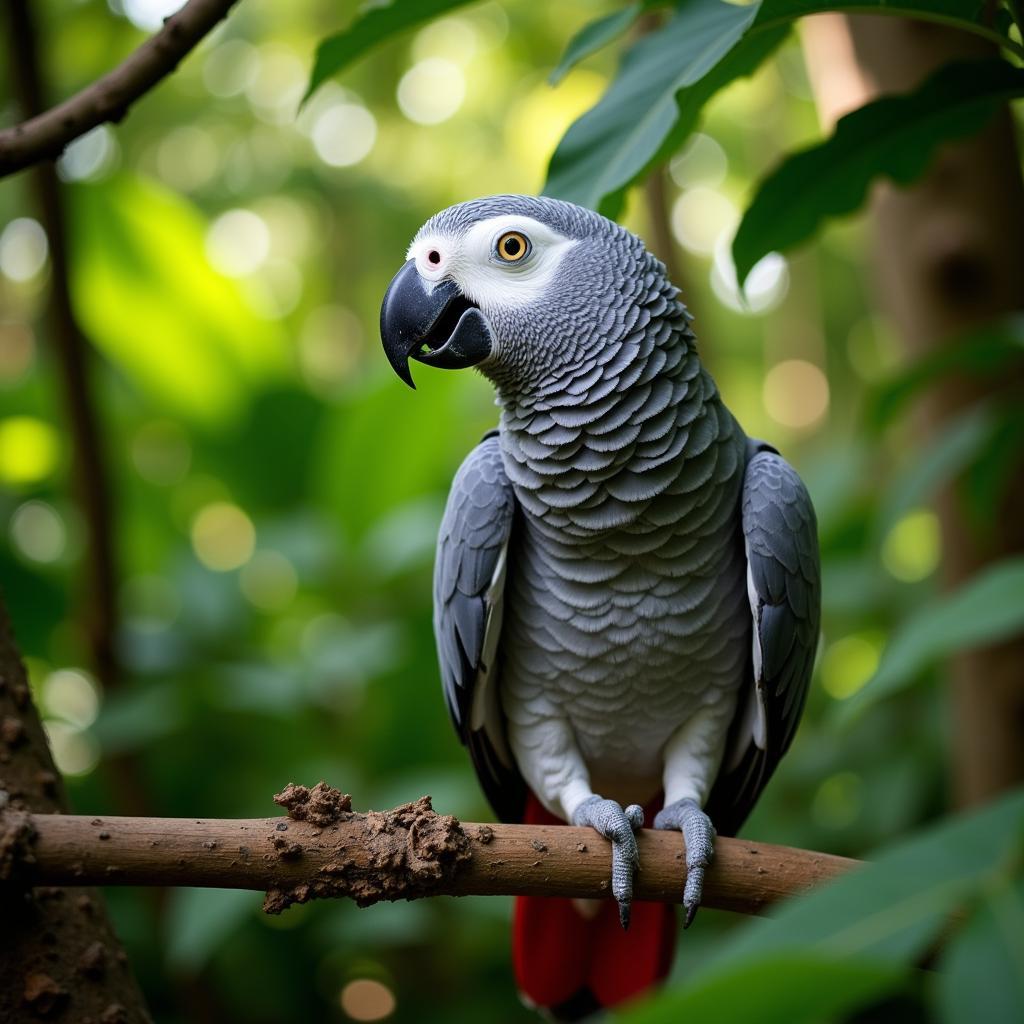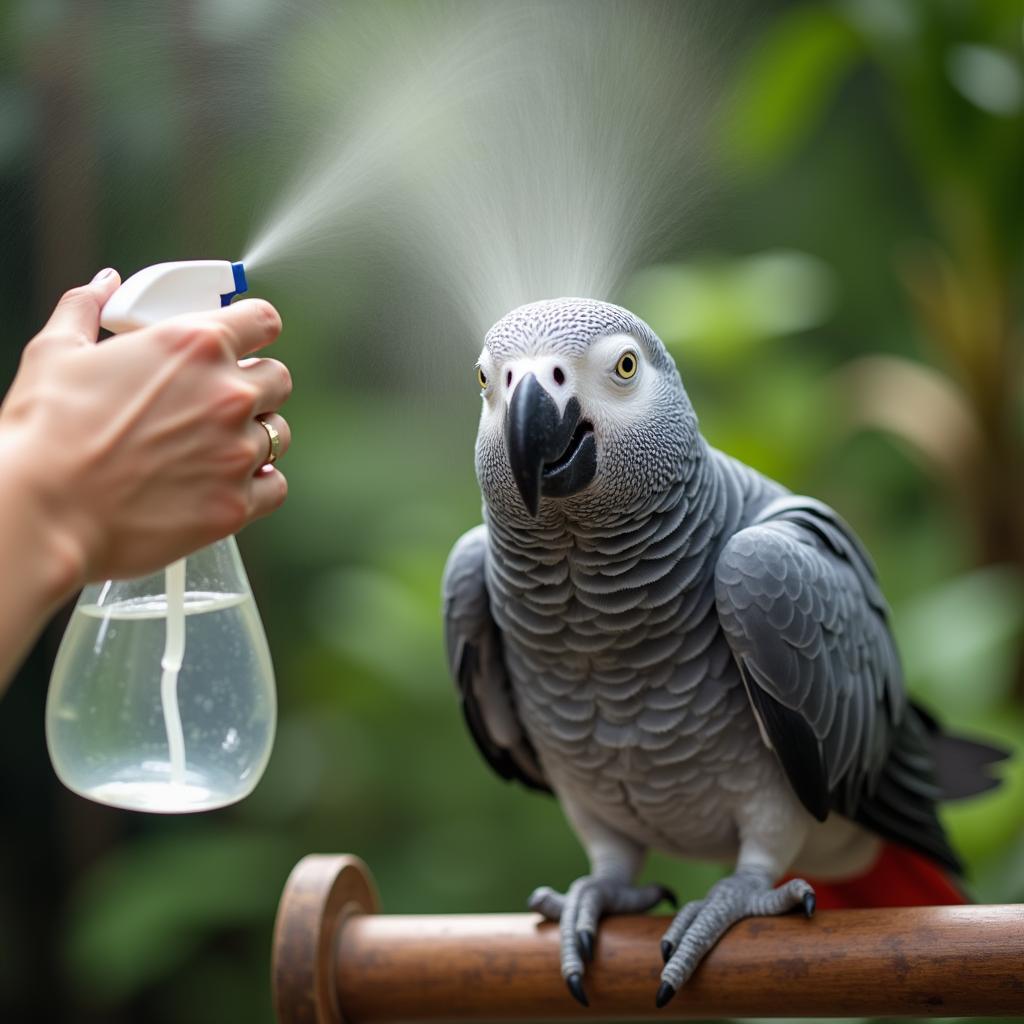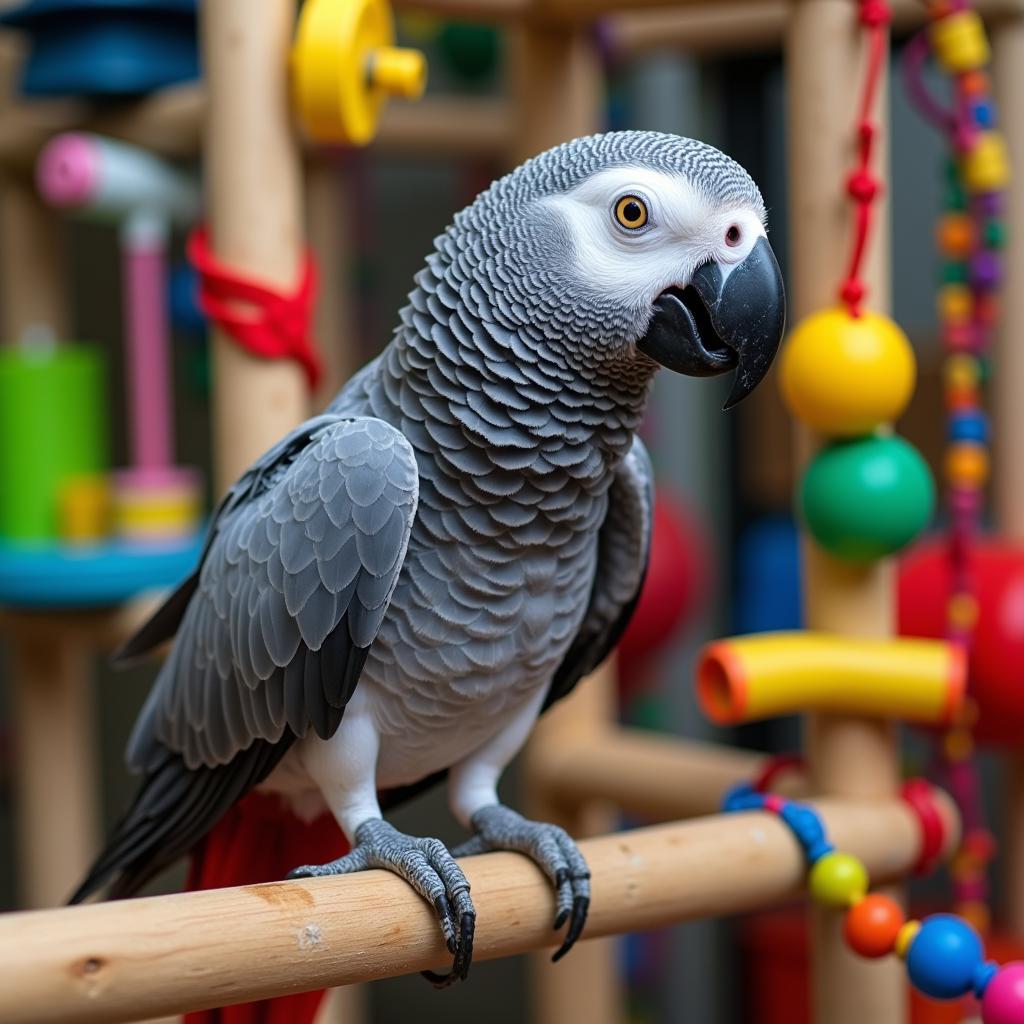The Ideal African Grey Parrot Temperature and Humidity
African grey parrots, renowned for their intelligence and ability to mimic human speech, are native to the equatorial regions of Africa. This means they thrive in warm, humid environments much different than a typical home. Providing the right african grey parrot temperature and humidity is essential for their health and happiness.
Creating the Perfect Climate for Your African Grey
Just like us, African greys are sensitive to temperature fluctuations. Their ideal temperature range sits between 70-80°F (21-27°C). Anything below 65°F (18°C) can put them at risk of hypothermia, while temperatures exceeding 85°F (29°C) can lead to heatstroke.
 African Grey Parrot in a Tropical Forest
African Grey Parrot in a Tropical Forest
Beyond temperature, humidity plays a crucial role in an African grey’s respiratory health. In their natural habitat, they experience humidity levels between 60-80%. Dry air, common in many homes, can lead to respiratory problems, dry skin, and feather plucking.
Maintaining Optimal Humidity Levels
There are several ways to achieve ideal humidity for your feathered companion:
- Humidifier: Investing in a good quality humidifier is one of the most effective ways to maintain consistent humidity levels in your home.
- Water Bowls: Placing bowls of water around your parrot’s cage, particularly near a heat source, can help increase humidity.
- Regular Misting: Misting your African grey with lukewarm water 1-2 times a day mimics the light rain showers they experience in the wild.
- Shower Time: Allowing your parrot to join you in a steamy bathroom during your shower is a fun and effective way to boost humidity.
 African Grey Parrot Being Misted with Water
African Grey Parrot Being Misted with Water
Recognizing Signs of Discomfort
It’s vital to recognize the signs that your African grey parrot might be uncomfortable with the temperature or humidity:
- Panting: Similar to dogs, panting can indicate your parrot is too hot.
- Shivering: If your parrot appears fluffed up and shivering, it’s a sign they are cold.
- Respiratory Distress: Wheezing, open-mouthed breathing, or tail bobbing can indicate respiratory issues, often linked to low humidity.
- Feather Plucking: Dry skin caused by low humidity can lead to excessive scratching and feather plucking.
Tips for Maintaining a Comfortable Environment
- Invest in a thermometer and hygrometer: Regularly monitor the temperature and humidity levels around your parrot’s cage to ensure they remain within the ideal range.
- Avoid drafts: Keep your parrot’s cage away from windows, doors, and air conditioning vents to prevent drafts.
- Provide shade: Always offer a shaded area within the cage where your parrot can escape direct sunlight or heat sources.
- Fresh Water Daily: Ensure a constant supply of fresh, clean water for both drinking and bathing.
By paying close attention to your African grey’s environment and addressing any signs of discomfort, you can help them thrive in their forever home. Remember, a happy, healthy parrot starts with a comfortable and enriching environment.
Do you want to learn more about caring for your African grey parrot? Check out these articles: african grey parrot breeding facts, african grey eggs hatching time, and african grey parrot laying eggs.
Frequently Asked Questions
What is the ideal temperature for an African Grey Parrot?
The ideal temperature for an African Grey Parrot is between 70-80°F (21-27°C).
How can I tell if my African Grey is too cold?
Signs your parrot is too cold include shivering, fluffing up their feathers, and lethargy.
What happens if the humidity is too low for my African Grey?
Low humidity can lead to respiratory problems, dry skin, and feather plucking in African Greys.
Can I use a humidifier for my African Grey?
Yes, using a humidifier is one of the most effective ways to maintain optimal humidity levels for your African Grey.
 African Grey Perched on a Play Stand with Toys
African Grey Perched on a Play Stand with Toys
Where should I place my African Grey’s cage?
Choose a location for your parrot’s cage that is away from drafts, direct sunlight, and extreme temperature fluctuations.
What are some signs of illness in an African Grey?
Besides temperature and humidity-related issues, other signs of illness can include loss of appetite, lethargy, changes in droppings, and feather plucking.
For more specific inquiries or concerns about your African Grey’s health and well-being, consult a qualified avian veterinarian.
Need More Help?
Do you have more questions or need further assistance in creating the best environment for your African Grey Parrot? Contact us! Our team is ready to help.
Call: +255768904061
Email: [email protected]
Visit: Mbarali DC Mawindi, Kangaga, Tanzania
We offer 24/7 customer support and a wealth of information on our website. Learn more about african grey parrot how it builds its home or discover amazing facts about the african gret parrot in amritsar.

